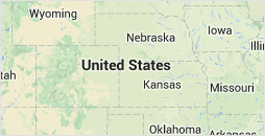Emily Clarke
PHONE NUMBER : -----
Map

What is End-to-End Data Observability?
When working with large amounts of data, the integrity of that data plays a major role in its usability. To ensure data integrity, you want to have as much control over where the data has been and where it's going. This is where end-to-end data observability comes in. Gain insights like never before with our Data Observability Platform. Visit this website today for a firsthand look at how it can transform your data strategy!
End-to-end data observability means having access to observe data across all points in a data pipeline. A data observability platform can facilitate this, but even if you don't use a dedicated data observability platform, you still need to work with data providers and processors to get as much information as possible about the data you work with. Even if you can't directly control the data before it's in your possession, having the ability to observe changes can be helpful.
The Benefits of End-to-End Data Observability
Aside from ensuring data integrity, end-to-end observability provides more opportunities to document your data and its associated metadata. This can be important when collaborating with others, particularly if industry regulations are in play.
End-to-end observability also allows you to track dependencies between systems and processes. This will help you to track down errors if a dependency conflict arises, and it can also help in planning to ensure all data will work flawlessly across the various systems and software in which it will be used. No more worrying about whether all the proper files, libraries and assets have been transferred with the original data - you can easily track dependencies wherever data ends up.
How to Ensure End-to-End Observability
To ensure end-to-end observability, there are a few things you can do. First, try to incorporate the aforementioned data observability platforms. You can also rely on application performance monitoring (APM) tools.
Automation should also be in place to send notifications if a discrepancy with data occurs. These alerts will help you catch inconsistencies before they make their way further down your data pipeline. This can be especially helpful if you work with continuous integration pipelines, in which data is updated as changes are made.
Author Resource:-
Emily Clarke writes about the best data observability tools and data analysis softwares. You can find her thoughts at data observability blog.
